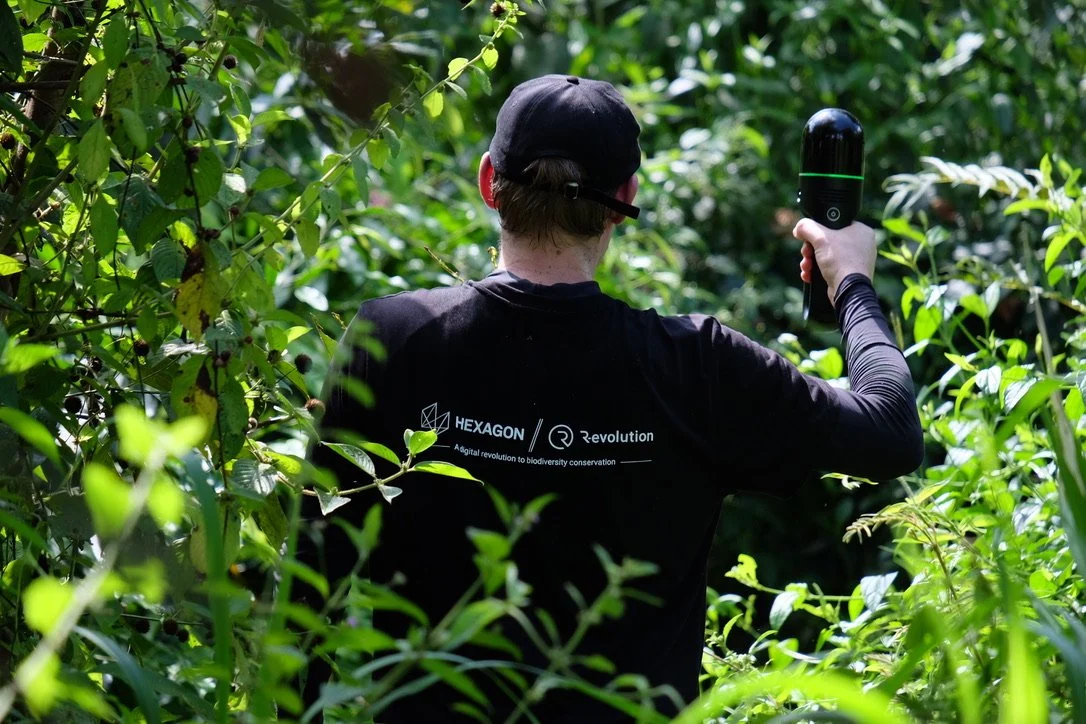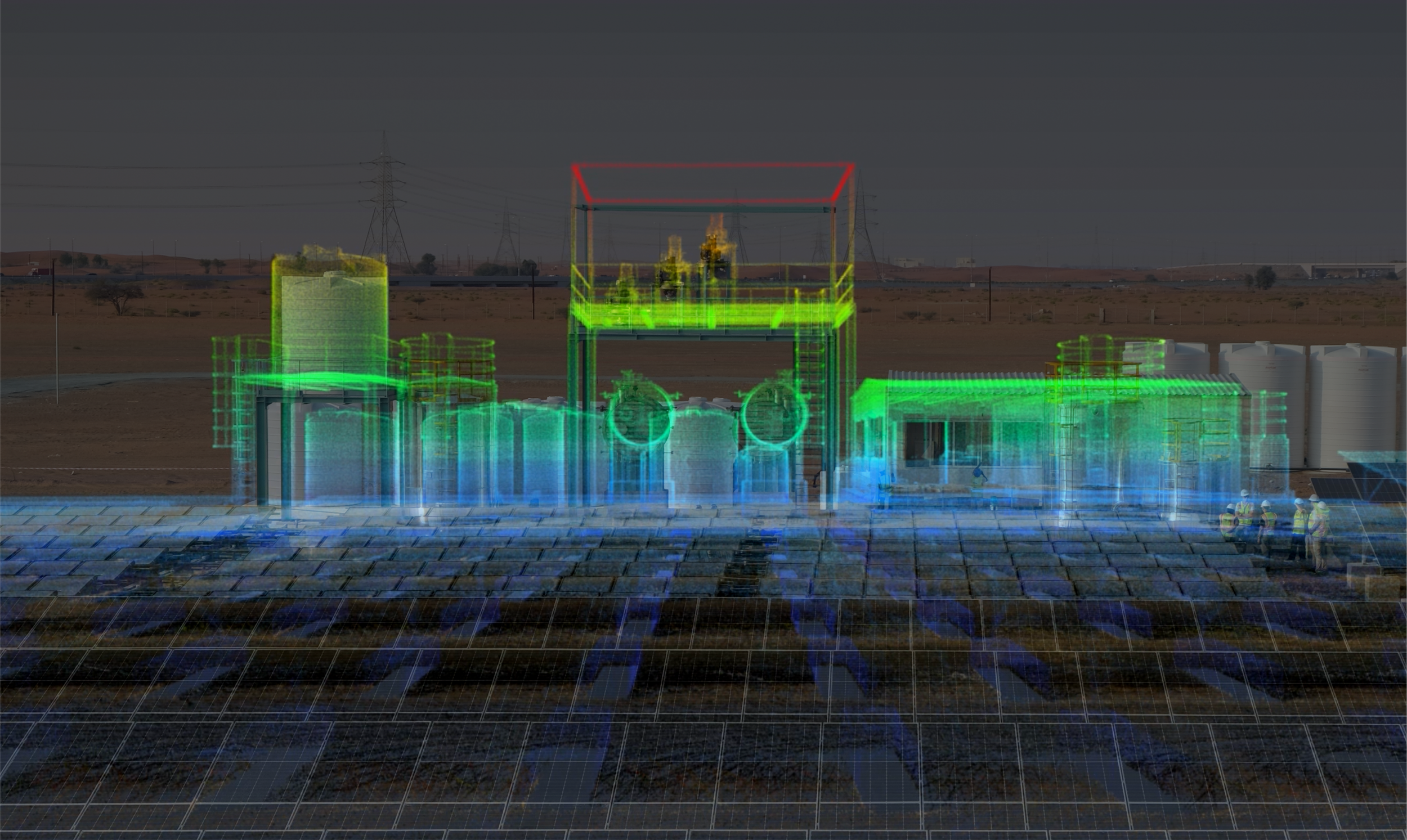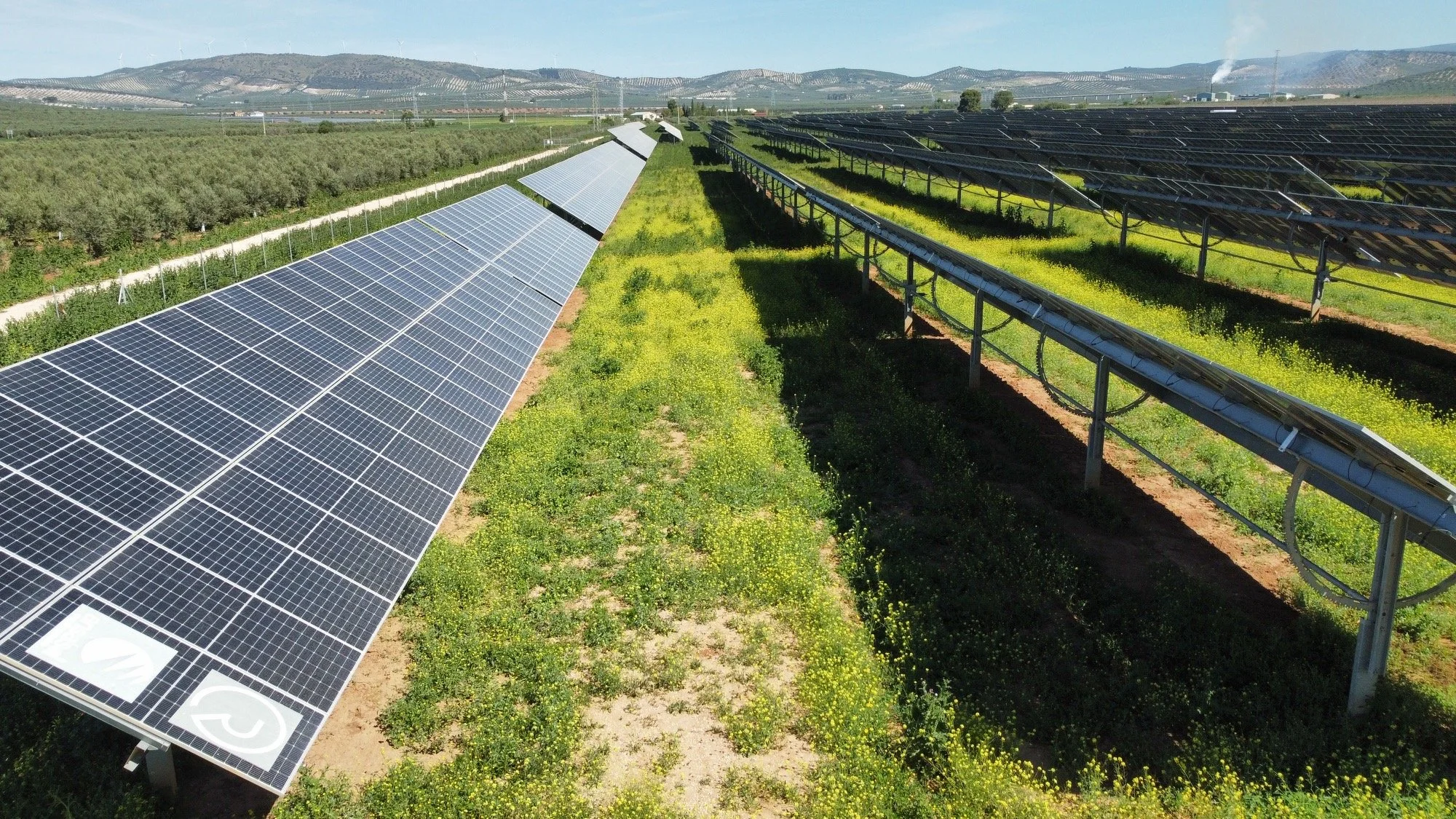Interview with R-evolution: Building Investment Models for a Nature-Positive Planet
What if the tools to tackle the climate and biodiversity crisis already exist, just waiting to be put to work in the right places, with the right partners? That’s the bet behind R-evolution, the sustainable innovation and green-tech investment arm of Hexagon AB. Their team believes that climate action isn’t just a necessity, it’s the business opportunity of a generation.
We sat down with R-evolution team to hear how they’re deploying advanced digital tools across forest conservation, ocean mapping, renewable energy, and more. From building a digital twin of the rainforest to backing solar-powered desalination, R-evolution is showing what it looks like when sustainability is baked into the business model (rather than bolted on). This conversation dives into their philosophy, the “REVO equation” that guides their work, and what’s next in their journey to scale high-impact, nature-positive solutions.
Q: What’s the story behind R-evolution?
Back in 2021, the executive team at Hexagon AB, a global leader in digital reality solutions, thought to themselves, ‘ we at Hexagon have this amazing technology suite of sensors, software and autonomous solutions. How can we now leverage this technical expertise to, in a profitable way, tackle climate change, the greatest challenge facing humankind?’ So this is how R-evolution was born. Our work is underpinned by what we call the ‘REVO’ equation:
The Reality is that there is a huge demand for planet-saving opportunities.
We can use Hexagon’s technological Expertise to accelerate the fight against climate change.
We must run profit-driven sustainable projects of Value, because in the long-run projects can only be sustainable if they are also profitable.
The result is R-evolution, the sustainable innovation and green-tech investment subsidiary of Hexagon, tapping into the biggest business Opportunity of the 21st century - saving our planet.
While climate change is rightly seen as one of the greatest threats to humanity, we also view it as a historic business opportunity, one that could unlock the most significant wave of value creation since the Industrial Revolution. Realizing this potential requires a new kind of business model, one where sustainability and profitability are not at odds, but deeply aligned. This transformational shift is what we call a ‘R-evolution’, and this is where our name comes from.
R-evolution’s core, multidisciplinary team consists of 5 rockstars:
Q: What are the challenges R-evolution is most focused on tackling?
Our core initiatives today are within forest and ocean biodiversity conservation, renewable energy (solar, wind, hydrogen) , and desalination. We focus on high-impact, boots-on-the-ground initiatives that align closely with Hexagon’s technical strengths. We accelerate these efforts through strategic equity investments and technical partnerships with startups driving innovation in each focus area.
Q: What do you see as the biggest obstacles for environmental and nature tech innovators and startups today?
Many nature tech startups struggle to define a clear and compelling USP, that has an unfair advantage relative to competitors. Instead of developing solutions tailored to the specific needs of an industry or client, they often pursue one-size-fits-all solutions that fail to resonate with real-world demand. As a result, these technologies can remain stuck in pilot mode, lacking traction or commercial relevance.
Another major barrier is the absence of hands-on technical investors who can help validate, scale, and deploy these innovations in real-world settings. Here is where we can come in and make a difference.
Q: How does R-evolution’s model help organizations overcome these challenges through investment, deployment, or partnerships?
Through R-ventures, we identify and invest in startups that can accelerate and scale our core initiatives at R-evolution. We go beyond capital by forming hands-on, technical partnerships that create mutual value. Selected startups gain access to live, on-the-ground commercial projects, where their technologies are deployed to solve real-world challenges.
This practical application not only accelerates their path to product-market fit but also provides a solid foundation for future growth, backed by real performance data, customer engagement, and operational experience.
Q: Are there any specific projects or companies in your portfolio that exemplify the “REVO equation” - where technology, investment, and environmental impact have come together in a powerful way?
Rainforest
In 2024 R-evolution launched our Green Cubes initiative with the mission to protect the planet’s most critical biodiversity hotspots through sponsorship of cubic metres of rainforest. Green Cubes is a solution that aims to plug the ‘data-gap’ issue of nature-based solutions by leveraging Hexagon and partner technology, creating a full digital twin of nature, truly highlighting the value of nature and biodiversity.
Our Green Cubes solution follows a data-driven methodology, combining earth observation data, airborne and terrestrial LiDAR, camera traps, acoustic sensors, soil sampling, ground penetrating radars, and pollution sensors to produce high accuracy biodiversity metrics on a cubic metre basis. Our methodology is scientifically verified by the University of Vienna, assured by KPMG, and supported by our partnerships with the world’s most promising biodiversity analytics startups, including fellow Nature Tech Collective member, Biometrio.earth.
Desalination
For our desalination initiative, addressing the global water scarcity crisis, R-evolution has invested and initiated a technical partnership with Desolenator, a scale-up that has pioneered solar-powered, fully circular desalination modules. R-evolution joined forces with Desolenator to create a digital twin blueprint for desalination plants.
Desolenator’s first plant, located in Al Ain, UAE, was commissioned in July 2024 and is currently producing 25 m³ of distilled water and 500 kWh of greenhouse cooling daily. Efficiency and performance of the desalination plant is optimised using Hexagon’s Smart Digital Reality powered by Hexagon enterprise asset management software.
In addition R-evolution has invested and initiated a technical partnership with Rebase.energy, which offers an AI-powered energy forecasting platform. R-evolution has integrated Rebase.energy’s predictive API to enhance the accuracy of energy forecasting for its solar parks. These forecasts are seamlessly incorporated into R-evolution’s mobile asset management platform, RevX, providing us with real-time insights through a unified, single-pane-of-glass interface.
Solar
For our solar initiative, R-evolution owns and operates a 16.4MWp, 40-ha solar park near Málaga in Spain. In 2024, the park generated over 30,501 MWh of which is enough power for 8,800 households on an annual basis. R-evolution has used Hexagon technology for asset optimisation, visual asset monitoring, asset performance management of the site, including device and work order management.
Ocean
Finally, with our ocean initiative we have in partnership with Beneath the Waves, delivered the highest accuracy seabed classification covering 3,300 km² in The Bahamas, enabling the Bahamian government to protect and monetise this environment via blue carbon credits. Moving from 360-degree cameras deployed on sharks, R-evolution has developed a solution that combines bathymetric LiDAR and multi-spectral imaging solutions for mapping tropical seagrass meadows, publishing the methodology as part of a scientific paper released in September 2024.
Q: Where do you see R-evolution fitting into the broader “nature tech” or sustainable investment ecosystem?
We aim to be a leading ecosystem player and thought leader in nature tech, driving innovation, investment, and the commercialisation of cutting-edge solutions in the sector, with a laser focus on smart digital twin technologies.
Nature Tech Collective (NTC) offers a world-class community of innovators, thinkers and investors, and so it was a natural and strategic decision for us to join the NTC , as it aligns closely with our ambition to accelerate and scale our nature-related initiatives.
Q: From global policy shifts to rising investor interest in sustainability, how is the landscape changing for companies like R-evolution?
At R-evolution we firmly believe that rising market expectations, stricter disclosure requirements, and emerging nature-related business opportunities will make it increasingly difficult for companies, across all industries, to avoid disclosing their biodiversity impacts.
Qualitative statements about significant impacts will no longer suffice. Nor will it be viable for companies to rely on a single tool, even at low levels of biodiversity ambition or for basic regulatory compliance. Instead, we anticipate that more companies will begin to view transparent, science-based biodiversity measurement tools not as a cost, but as a strategic investment.
This is where we see a clear opportunity for R-evolution, together with our broader nature tech ecosystem, to deliver world-class solutions for biodiversity assessment and reporting.
To truly accelerate nature-positive investing, we need to see the emergence of robust markets for biodiversity credits, as well as an evolution in carbon markets toward high-quality credits that integrate nature-positive outcomes. Companies that embrace cutting-edge data to monitor their impacts on ecosystem conservation and restoration can help catalyze the supply of high-integrity biodiversity and carbon credits. This is not only a critical enabler for these markets to mature - it also represents a future revenue opportunity for forward-thinking businesses.
Q: What’s coming next for R-evolution? Are there any upcoming partnerships, technologies, or project areas you’re especially excited about? What’s your long-term vision?
There is a saying that ‘if you can’t grow it, you have to mine it.’
So whether we like it or not, mining will be with us for many decades to come. As one of the top five industries with the greatest impact on biodiversity, mining accounts for 40 percent of activity in regions experiencing a decline in ecological health. However, mining is also crucial to the energy transition, with projections indicating that 6.5 billion tonnes of end-use materials will be needed between 2022 and 2050 to support this shift. We therefore see the opportunity to use the Green Cubes technology stack to drive sustainability in the mining industry, creating real impact for decades to come.
As such, we have now extended our Green Cubes offering with the launch of Green Cubes Digital Reality, transforming the way we Measure, Report and Validate(MRV) environmental projects in the mining sector. The digital twin of a cubic metre can be used to compare the differences between two locations over time and across a wide range of values such as forest height and profile, flora and fauna richness and abundance, soil quality and biodiversity.
We see that the pressure for mining companies to keep up with biodiversity impact monitoring is accelerating fast, both via local permitting and new global regulatory frameworks. In addition, restoration projects, often described as rehabilitation, reclamation or future use, require significant investments where any efficiency gain could make a significant difference. This is where Green Cubes Digital Reality now comes in, offering a transparent and standardized approach to report on biodiversity impacts and conservation efforts, aligning with stringent standards and regulations. This is crucial for mining companies to improve ESG reporting, maintain licenses to operate, improve the efficiency in rehabilitation projects and improve reputation in the value chain by taking real positive environmental actions.
We also believe that the scope for Green Cubes Digital Reality extends beyond the extraction industry and has the potential to be the digital base for new industries and nature positive projects worldwide. In agriculture, for example, where the balance between productivity and ecological impact is delicate, Green Cubes can provide invaluable data and insights into sustainable land management, helping to conserve biodiversity while also optimizing crop yields.
Q: How can others engage with or support R-evolution’s mission? What kinds of collaborations or inputs are most valuable to your work right now?
We are always happy to connect with startups and scientists in the biodiversity conservation space. We are continuously building our nature tech ecosystem to drive, sustainable, profitable projects with real impact.
Q: Is there anything else you’d like to share with our audience - a quote, an insight, or a final call to action for those passionate about aligning innovation with environmental impact?
I want to re-emphasize that profitability and sustainability must go hand in hand, and so I want to come back to this quote by Kofi Annan :
“Contrary to popular belief, we do not face a choice between economy and ecology. It is often said that protecting the environment would constrain or even undermine economic growth. In fact, the opposite is true: unless we protect resources and the earth's natural capital, we shall not be able to sustain economic growth.”
Kofi Annan, Secretary General, United Nations, 2000
About R-evolution
R-evolution is the sustainable innovation and green-tech investment subsidiary of Hexagon AB, a global leader in digital reality solutions. Launched in 2021, R-evolution’s mission is to leverage Hexagon’s leadership in sensors, software and autonomous solutions to run profit-driven, sustainable projects.
You can find more details on how to support R-evolution on their website.




